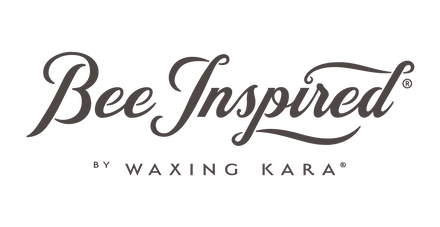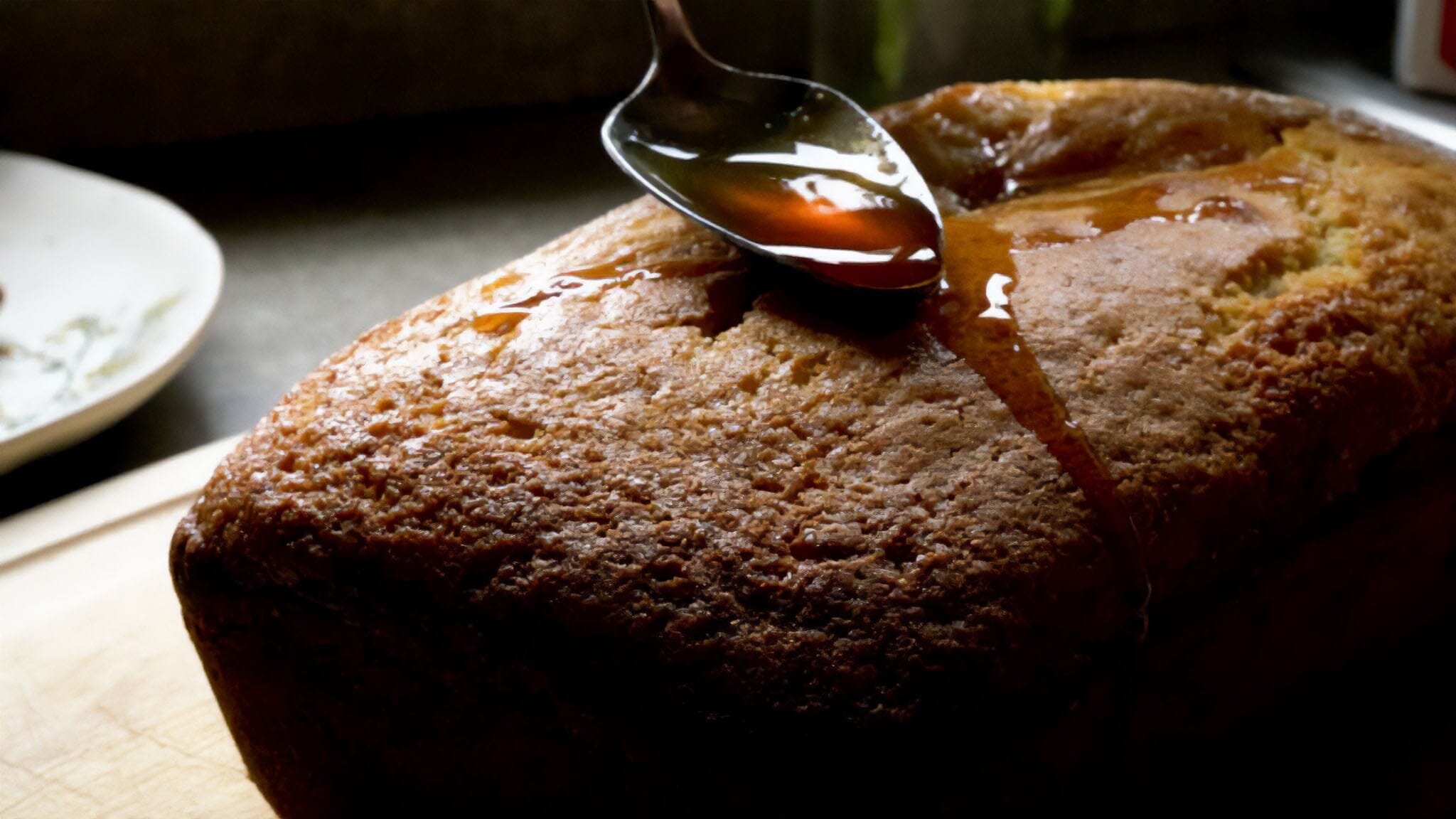Discover the sweet secret to healthier baking with honey! Not only does this natural alternative taste amazing with honey flavor, but it also comes with a range of health benefits. Say goodbye to compromising your well-being for tasty treats, and learn to use raw honey in baking for all your favorite desserts!
Honey Lemon Lavender Cake by Bee Inspired
Honey has been used as a natural sweetener for centuries
Honey is known for its numerous health and nutritional benefits. Honey contains more nutrients and antioxidants than refined sugar, making it an excellent alternative for improving health. Whenever a recipe calls for sugar, you can feel confident in replacing honey with sugar as you make this dietary change.
One of the main advantages of using honey in baking is its ability to enhance the flavors of other ingredients. Honey has a unique floral taste that can add depth and complexity to desserts. Plus, its natural sweetness means you can use less, making your treats lower calories without sacrificing taste in your baking recipes.
 Apple Honey Cake by Bee Inspired! The recipe is linked at the bottom.
Apple Honey Cake by Bee Inspired! The recipe is linked at the bottom.
Practice Makes Perfect
Don't worry if you're unsure about substituting honey for cane sugar. I've found that substituting up to one cup of honey in recipes produces flawless baked goods every time. The trick is to watch the oven temperature as you confidently embrace this process.
With some experimentation adding honey, you can elevate this traditional ingredient to new heights. Experience the joy of baking with honey and delight in healthier, irresistibly delicious treats that only honey has to offer. 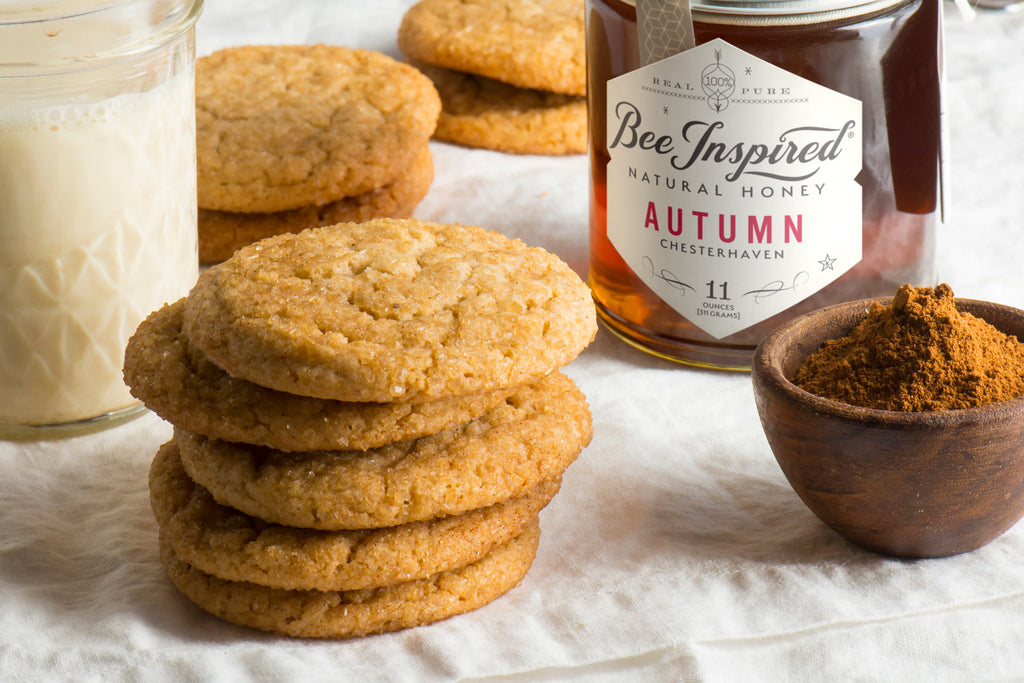 Honey Ginger Cookies by Bee Inspired!
Honey Ginger Cookies by Bee Inspired!
Recipe Calls
Today, I found out that I prefer less sugar in most recipes. Honey will burn faster than cane sugar and add extra moisture into recipes. Because of this, if a recipe calls for more than one cup of sugar, limit honey replacement to one cup of honey.
Because honey adds moisture to your recipe and can make the batter soft, it is essential to decrease the amount of other liquids in your mix. Adding more dry ingredients, like baking soda and flour, is fine bu also essential to help soak up the moisture honey adds. 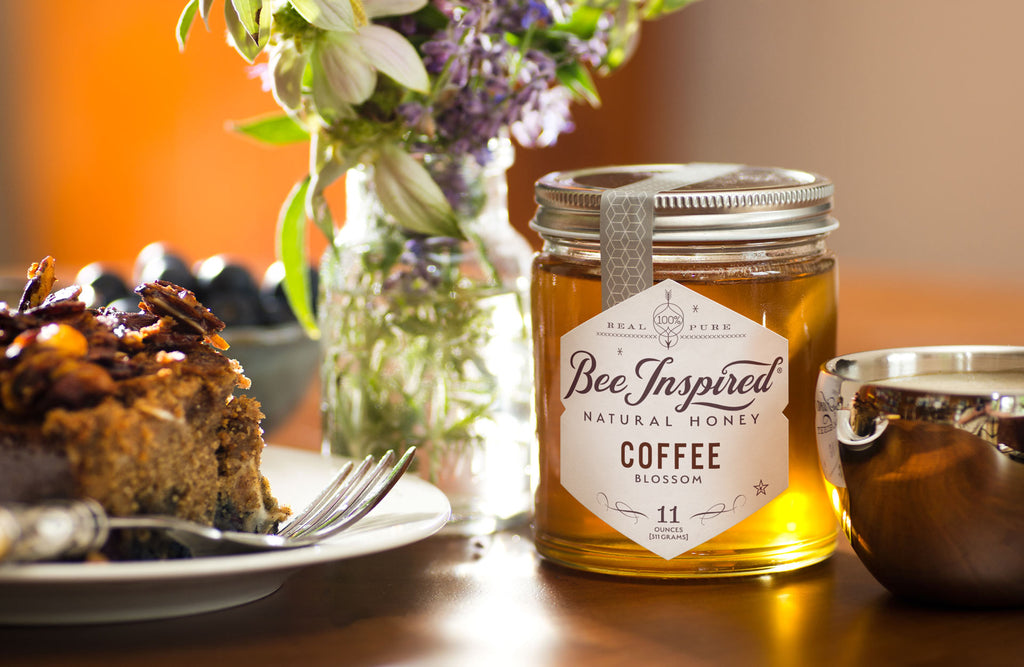 Honey Coffee Cake by Bee Inspired!
Honey Coffee Cake by Bee Inspired!
Baking soda will make your mix thicker, helping to form the correct consistency of your dessert. It is the most important of all the dry ingredients you could add. Keep your dish tasty with these hacks when you add honey to your cakes!
Use up to a cup of honey, and use organic and unprocessed sugar for over one cup. You may run the recipe several times to appeal to your own taste buds.
 Honey Carrot Bran Muffins by Bee Inspired!
Honey Carrot Bran Muffins by Bee Inspired!
Why Substitute Honey for Sugar?
Honey is a sweet alternative to regular sugar. It has many health benefits that sugar can't offer! Honey is rich in:
-
Antioxidants
-
Vitamins
-
Minerals
-
Amino acids
-
Healthy digestion enzymes
-
Immune system-boosting enzymes
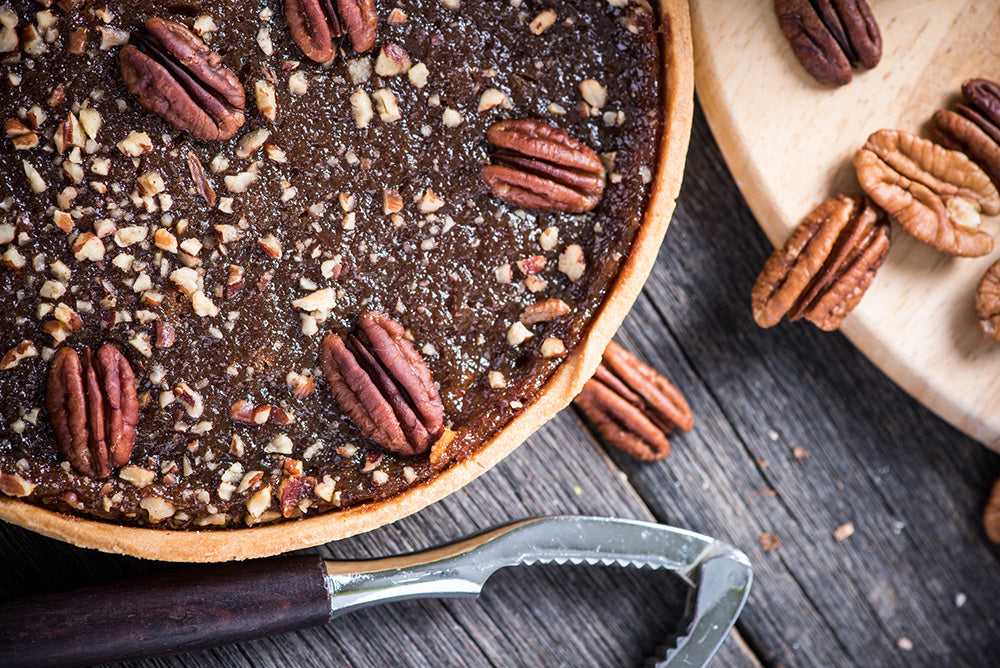 Honey Pecan Pie by Bee Inspired!
Honey Pecan Pie by Bee Inspired!
Additionally, honey has a lower glycemic index than sugar. This means that honey doesn't cause such a dramatic blood sugar spike, making it more suitable for people with diabetes to consume baked goods, replacing honey with sugar.
Specifically to baked goods, substituting honey with sugar will increase the moisture of your recipe. This is because honey is hygroscopic, soaking up and retaining moisture. If you're having trouble making a moist cake, it may be a sign to add some honey!
When you learn about baking with honey, prepare for healthier, moist baked goods!
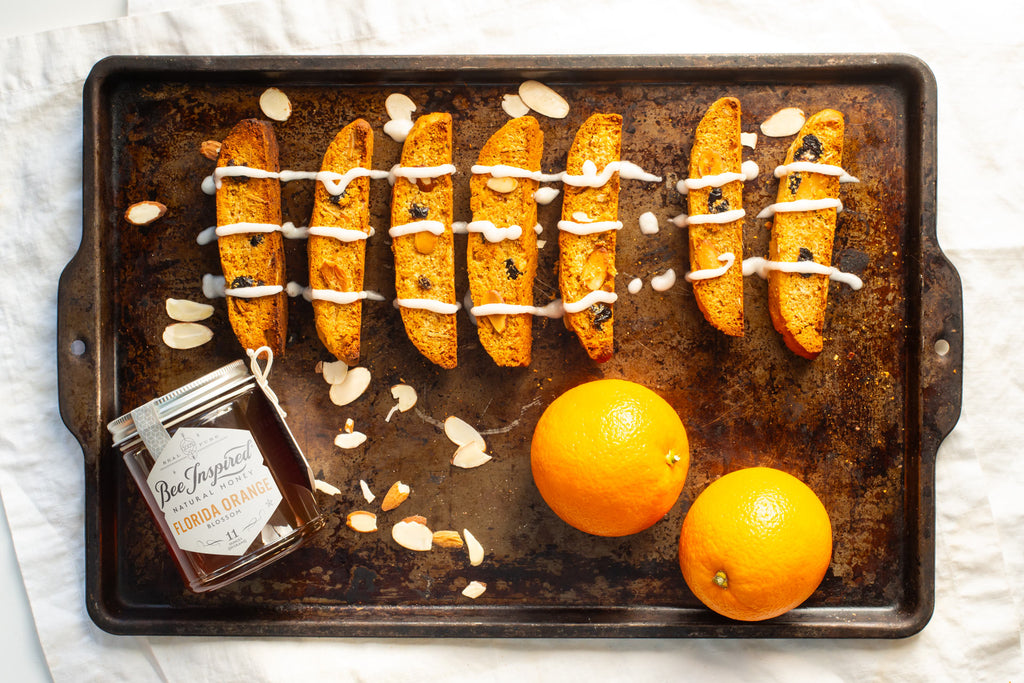 Cranberry-Orange Biscotti by Bee Inspired is made with orange zest.
Cranberry-Orange Biscotti by Bee Inspired is made with orange zest.
How to Bake with Honey
Different Honey Varietals = Different Taste
Depending on the type of plants the bees pollinate, each honey varietal has its own unique flavor and taste. When cooking and baking with honey, your outcome may taste different depending on your honey varietal.  Honey Gift Set by Bee Inspired! Features four different honey varietals.
Honey Gift Set by Bee Inspired! Features four different honey varietals.
Here is a simple guide to get you started on picking the best honey varietal to make the most of the honey flavor in your recipe based on a light vs dark color system:
-
Light Honey - Lighter honey, such as our Blueberry and Spring varietals, is perfect for keeping your baked good's classic taste. The flavor profiles are sweet and muted so that they won't have too much impact.
-
Dark Honey - Darker Honey, such as our Bamboo and Buckwheat varietals, will add a rich, deep flavor to your baked goods. With notes of molasses, we recommend pairing darker honey with rich, chocolaty desserts.
 Honey Cherry Cobbler by Bee Inspired! The recipe is linked at the bottom.
Honey Cherry Cobbler by Bee Inspired! The recipe is linked at the bottom.
Do not be afraid to experiment with your honey to get the best flavor for you!
The most important part about choosing honey to bake with is making sure the honey is pure and natural without added sugars or fillers. It is also important to purchase local honey to support the bees and beekeepers in your community!
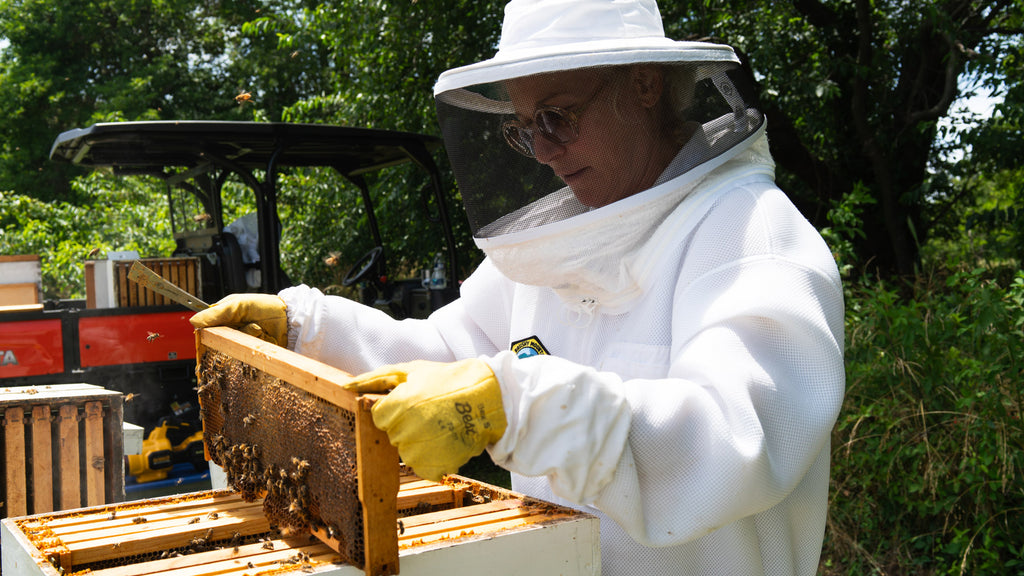 Kara holding a frame to harvest honey at our farm on the Eastern Shore!
Kara holding a frame to harvest honey at our farm on the Eastern Shore!
Tips for Baking with Honey
Now that you've picked out the perfect honey for your recipe, here are some tips for you when baking with honey to ensure perfect baked goods every time:
-
Drop the Temperature - Honey tends to brown faster than regular sugar. To ensure your recipe doesn't burn, it is recommended that you cook at a lower oven temperature than normal, about 25F less.
-
Decrease the Liquids - Since honey collects moisture, it is important to cut down on your other wet ingredients when substituting honey for sugar to maintain a desirable texture. In addition to decreasing liquid, you can also increase dry ingredients like flour.
-
Oil the Measuring Cup - We all know how sticky honey can be! Brushing a flavorless oil on your measuring utensils will help the honey slip right out.
-
The Sweetest Ratio - Since honey is sweeter than sugar, you will not need as much to achieve the same great taste in your baked goods! Using ¾ cup of honey for every cup of sugar you replace is recommended.
-
One Cup of Honey - If you are worried about the form of your cake and other baked goods being too soft, we recommend you stir in up to one cup of honey to replace the sugar. For over one cup, use organic, unprocessed sugar. The more you add other liquids, the more you will want to reduce the amount of honey.
-
Baking Soda is your Best Friend - Add 1/4 teaspoon per cup of honey, especially if baking soda is not already included in the recipe. Adding baking soda reduces the acidity of the honey, increases volume, and helps prevent burning. By reducing the acidity, you have a better chance of keeping the taste and consistency.
-
Room Temperature Ingredients - Always bring the eggs, butter, yogurt, and other refrigerated and liquid ingredients to room temperature. Set eggs in a bowl and cover them with a hot water bath to warm them. The batter may curdle or take much longer to incorporate if these ingredients are used while cold.
-
Working with Crystallization - It is normal for pure, raw, natural honey to crystallize. This doesn't mean you have to throw it away! By carefully heating up crystallized honey, you can reconstitute it and use it to make your delicious, moist cake. Just boil some water, then remove it from heat. Take the lid off of the jar of honey and place the jar in the hot water. Be sure to let the honey cool before using it in your recipe!
 Strawberry Scones by Bee Inspired! The recipe is linked at the bottom.
Strawberry Scones by Bee Inspired! The recipe is linked at the bottom.
Our Favorite Baked Goods with Honey are Sweeter
Are you excited to get started on your baking journey with honey? Below, we listed some fabulous recipes to help you get started.
Most of these food recipes require flour, butter, and honey! No eggs give these recipes the option to be vegetarian, too. These recipes have endless options for toppings, including cream, syrup, and even homemade honey syrup!
 Our honey is perfect for Rosh Hashanah!
Our honey is perfect for Rosh Hashanah!
Heat them up or enjoy them cold; they require just a quick trip to the oven to bake. Don't worry about changing any measurements with these recipes – we accounted for the honey!
-
Apple Honey Cake - This honey cake recipe tastes fantastic and doesn't require eggs! The ingredients to maintain consistency include all-purpose flour, coconut sugar, baking powder soda, and ground spices in this cake. Special ingredients, such as lemon juice, orange juice, and warm coffee, are also included to make this cake recipe stand out from all the other cakes!
-
Cranberry-Orange Biscotti - Looking for a pastry prepared to perfection and best served with warm drinks? Look no further than our Cranberry-Orange Biscotti! Made with flour and flaked almonds, this tart treat is easily cooked in the oven. The liquid sugar syrup on top, made with plant-based milk, creates the perfect glaze for this warmed sweet.
-
Honey Cherry Cobbler - Get ready to mix this gluten-free substitute for any cake! One cup of any kind of milk when baking, the option to add vegan butter, and no egg required will help this fluffy food appeal to all. To make it even sweeter, garnish with whipped cream!
-
Strawberry Scones - Bake these scones in the oven, store them, and heat them up in the morning to enjoy their sweetness for breakfast! The liquid glaze requires you to stir one cup of powdered sugar with two tablespoons of Bee Inspired Honey with a spoon to create honey syrup. Whether you add only a bit or enjoy your scones soaked, this honey recipe is perfect for any time of day!
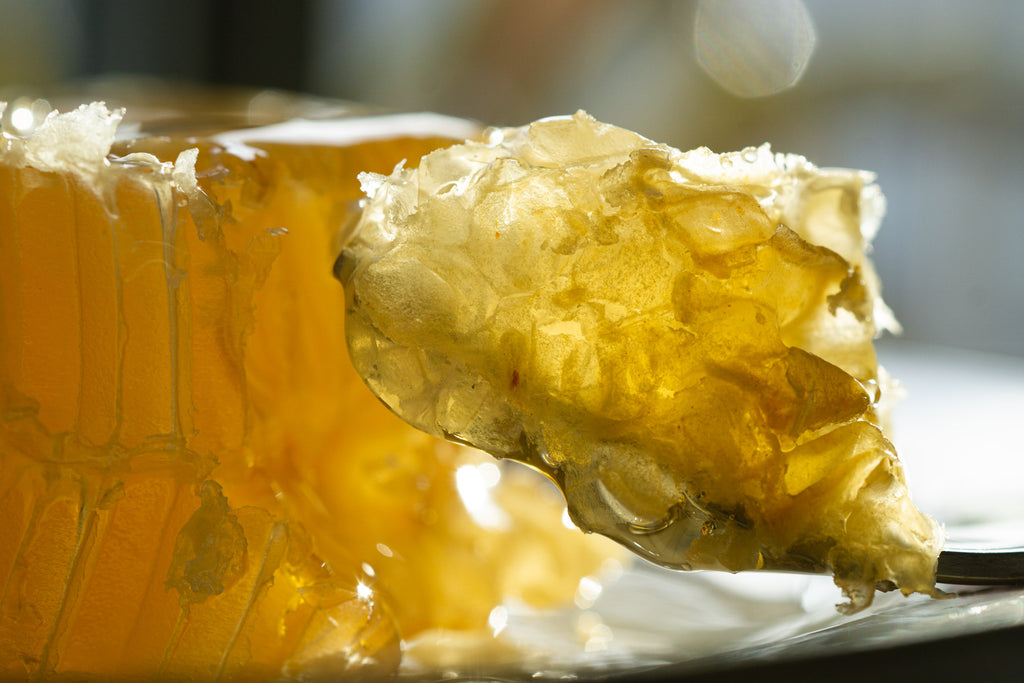 Raw Honeycomb by Bee Inspired! Perfect for pairing with food or eating on its own.
Raw Honeycomb by Bee Inspired! Perfect for pairing with food or eating on its own.
If you try any of our honey recipes or decide to cook and bake your own, don't forget to thank the bees! Without the bees, the sweetness of baking with honey would be impossible.

